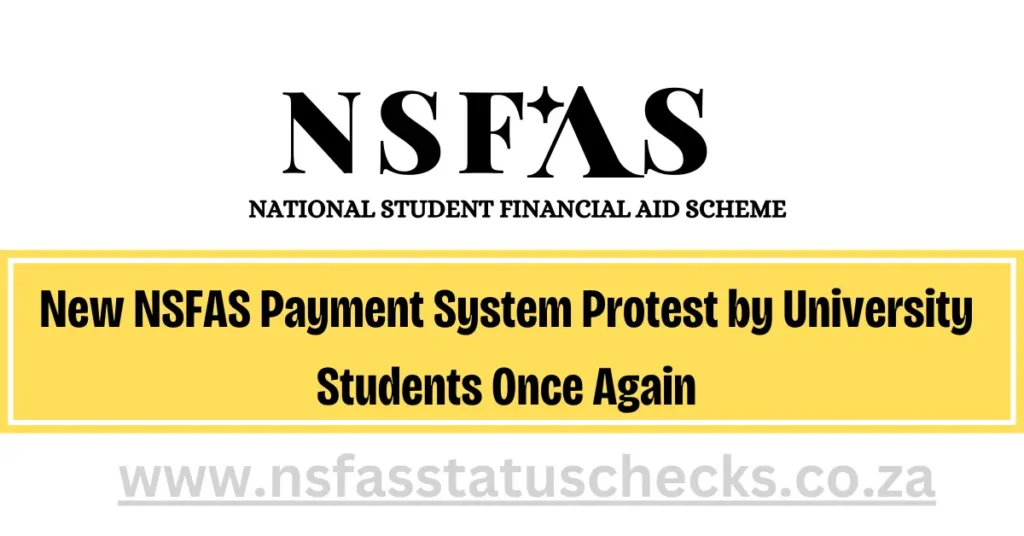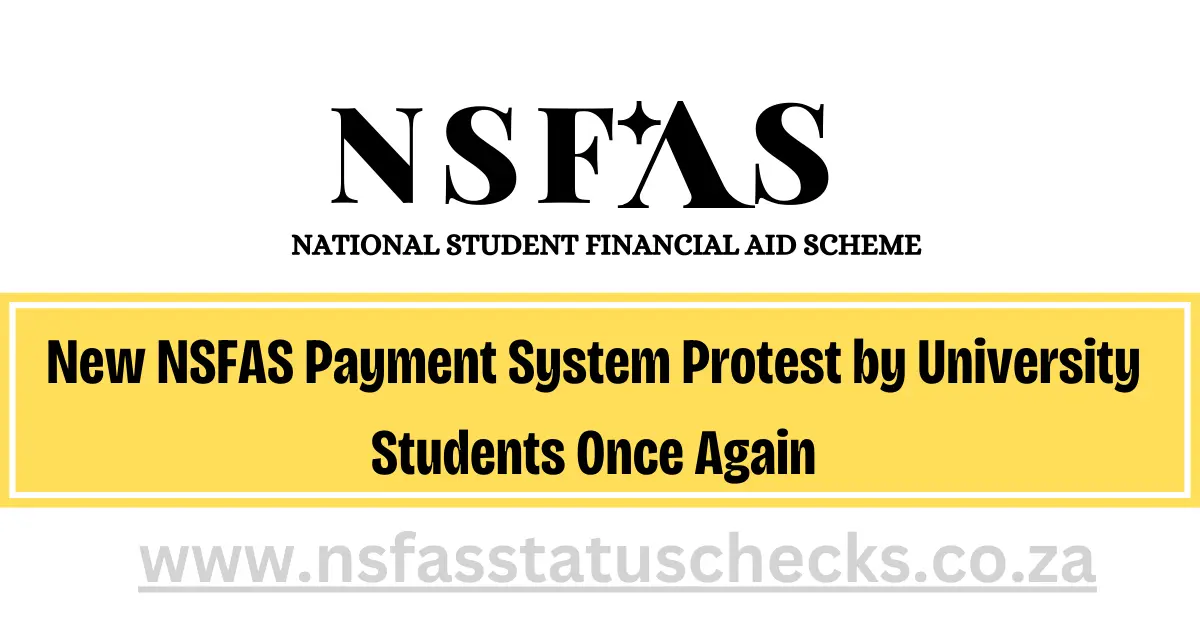A protest by university students against the implementation of a new payment system has once again brought national attention to the South African NSFAS. This article aims to delve into the intricacies of the recent protests, providing a comprehensive understanding of the changes, reasons behind the uproar, student perspectives, historical context, and potential solutions.

NSFAS Payment System Protest by University Students
Brief overview of NSFAS Payment System
The NSFAS Payment System is a crucial aspect of higher education funding in South Africa, providing financial aid to eligible students.
Previous protests by university students
Historically, university students have voiced their concerns and discontent through protests related to NSFAS policies.
Significance of the new payment system
The recent shift in the payment system brings forth both challenges and opportunities for students seeking financial assistance.
Understanding the New NSFAS Payment System
Explanation of the changes
NSFAS has transitioned from manual to automated processes, streamlining the application and disbursement procedures.
Shift from manual to automated processes
The move aims to enhance efficiency in handling applications and distributing funds promptly.
Inclusion of new eligibility criteria
Certain changes in eligibility criteria have been introduced, influencing the selection process.
Impact on students
Benefits of the new system
The automated system promises quicker responses and reduced administrative delays.
Concerns raised by students
However, some students express apprehensions about the changes, particularly regarding eligibility criteria and transparency.
Reasons Behind the Protest
Lack of communication from NSFAS
One key grievance is the perceived lack of communication from NSFAS about the changes, leading to confusion among students.
Misunderstandings about eligibility criteria
Students are protesting due to misunderstandings and uncertainties regarding the new eligibility criteria.
Perceived financial burdens on students
The new system has triggered concerns about potential financial burdens on students, affecting their ability to pursue education.
Student Perspectives
Interviews with protesting students
Conducting interviews with protesting students offers insights into their specific grievances and concerns.
Insights into their grievances
Understanding the specific issues raised by students sheds light on the complexities of the situation.
Social media reactions and campaigns
The role of social media in amplifying student voices and organizing campaigns becomes apparent in the digital age.
Historical Context
Past protests and their outcomes
Exploring the outcomes of past student protests against NSFAS provides context for the current situation.
The role of student activism in policy changes
Historically, student activism has played a pivotal role in shaping policies related to education and financial aid.
Comparison with other education systems
Drawing comparisons with international education systems offers a broader perspective on the challenges faced by South African students.
The Response from Universities
Statements from university officials
University officials respond to the protests, outlining their stance on the matter.
Addressing the concerns of students
It is the universities’ responsibility to address the concerns raised by protesting students in a pro-active manner.
Collaborative efforts between universities and NSFAS
Collaboration between universities and NSFAS is essential for finding common ground and resolving issues collectively.
Media Coverage and Public Perception
Coverage by mainstream media
By covering protests and related developments, the mainstream media can significantly influence public perception.
Social media’s role in shaping public opinion
The influence of social media on public opinion highlights the power of digital platforms in mobilizing support for student causes.
Analysis of public sentiment
In order to understand how protests affect society broader, it is helpful to analyze public sentiment.
Government Involvement
Government’s stance on the protests
The government’s response to the protests and its role in addressing the concerns of students. We are left in suspense for some days about whether NSFAS will collapse or not.
Plans for addressing the issues raised by students
Government initiatives and plans to resolve the issues raised by students are crucial in shaping the future of higher education funding.
Historical context of government involvement in student protests
A historical overview of government involvement in addressing student protests sheds light on the effectiveness of past interventions.
Possible Solutions
Dialogue between students and NSFAS
Facilitating a constructive dialogue between students and NSFAS is essential for mutual understanding and resolution.
Adjustments to the new payment system
Consideration of adjustments to the new payment system based on student feedback can contribute to a more inclusive approach.
Long-term strategies for improving student financial support
Exploring long-term strategies to enhance student financial support ensures the sustainability of higher education funding.
Conclusion
Recap of key points
Summarizing the key points highlights the multifaceted nature of the issues surrounding the new NSFAS payment system.
The potential impact of the protests on policy changes
Examining the potential impact of the protests on future NSFAS policies and higher education funding.
Call to action for stakeholders involved
A call to action encourages collaboration between all stakeholders to find sustainable solutions and ensure equitable access to education.
FAQs – NSFAS Payment System Protest by University Students
What specific changes have been made to the NSFAS payment system?
The NSFAS payment system has undergone a transition from manual to automated processes, with new eligibility criteria introduced.
Why are students protesting against the new payment system?
Students express concerns about communication gaps, misunderstandings regarding eligibility criteria, and perceived financial burdens.
How is social media influencing the protest movement?
Social media plays a crucial role in amplifying student voices, organizing campaigns, and shaping public opinion on the protests.
What measures are universities taking to address student concerns?
Universities are responding with statements, proactive measures, and collaborative efforts with NSFAS to address the grievances raised by protesting students.
How does the government resolve protests over the NSFAS payment system?
The government’s stance, plans for addressing student concerns, and historical context of involvement in student protests are explored in the article.
